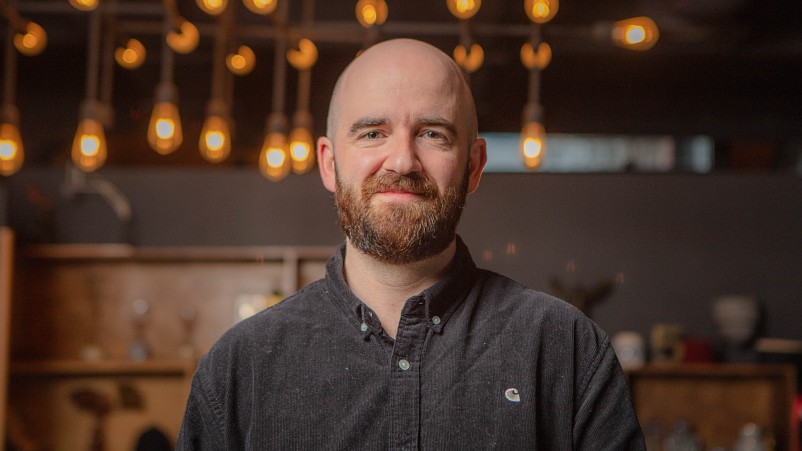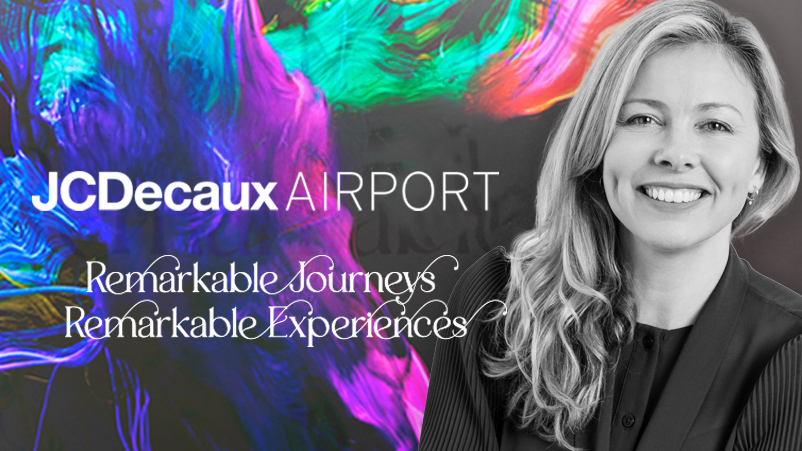Achieving creative scale with effectiveness: VP and CMO of Amaysim tout agile mindset, bold creative flair and relentless value as delivering 25 per cent growth in three years and the foundations for product expansion success

From left: amaysim's Peter MacGregor and Vir Inder Nath
As Optus has suffered the effects of massive data breaches and network failures, Amaysim has flourished. It's delivered 25 per cent growth since being acquired by the larger telco in 2021, and was behind 108,000 of its parent company's 116,000 new mobile customers in the year to 31 March 2024. Now the value brand, which has 1.5m customers and is recommended by nine in 10 of them, has its sights on becoming a full-service telco with NBN services incoming. It’s part of a clear growth strategy around the core business of connecting, says recently installed VP, Vir Inder Nath. It’s also arguably a decision reflecting learnings from a previous misstep into utility services. Supporting the challenger mindset and growing product line is a commitment to dialling creativity and effectiveness in parallel, says CMO, Peter MacGregor. Latest examples under his rein include Amaysim’s first in-house created stop animation campaign (yes, another telco going there) as well as personalisation focused firmly on delivering existing customers more value and relevant content.
What you need to know:
- Having delivered 25 per cent growth in three years and all but 8,000 of Optus’ net new mobile customers in the last financial year, Amaysim is bullishly aggressively about achieving similar growth as it broaden its product portfolio with NBN services.
- With cost of living as the biggest lever available to challenger value telco Amaysim right now, the brand has also just debuted a new stop animation campaign that dials up both a new bold creative direction plus new research showing 30 per cent of consumers struggling to pay mobile bills.
- For Amaysim CMO, Peter MacGregor, “creative scale” and a focus on both dialling up creativity as well as effectiveness are instrumental to his marketing team’s approach.
- According to newly installed VP, Vir Inder Nath, bold in-house creative like the new ‘Better? Better!” campaign is critical to cutting through the clutter as a challenger and also reflects an agile, customer-first mindset that’s been instrumental to Amaysim’s growth trajectory.
- Personalisation and growing use of AI are the “secret sauce” meanwhile for improving experiences and customer lifetime value, the pair say.
There seems to be quite the fascination with stop animation ads in telco land at the moment, agrees Amaysim’s marketing chief, Pete MacGregor.
The CMO, who joined the challenger telco brand 10 months ago, has just released a new above-the-line campaign created by its in-house creative studio and Australian animator, Jarod Green, dubbed’ ‘Better? Better!’. The creative features two animated koalas debating what value looks like from a mobile services provider. Dialogue takes its cues from a recent YouGov commissioned research program that found 30 per cent of Australians have struggled to pay their mobile phone bills in the last year. The research also showed 50 per cent of consumers believe smaller telcos offer more value, and nearly 40 per cent are considering switching to smaller providers like Amaysim in the next 12 months.
The koalas and animation are a new creative direction for the brand, and one which might stick around – and might not, according to MacGregor. It all depends on consumer reception and campaign performance.
“The Koala and ‘Better? Better!’ work was fun and something we turned around in a couple of days. Stop motion ads seem to be quite the hit at the moment,” MacGregor quips. “It goes to the core of our idea of ‘affordable freedom’. The way we bring that out is with stop motion, having some playfulness with it. Through that, we’re showing how you question your mobile bill, pulling it through to how you can check out Amaysim for great value.
“We are trying a few different things and seeing what sticks.”
Building agile creativity
MacGregor calls this “creative scale” and says it’s his maxim. “Companies like AB InBev, Leo Burnett have this amazing creative scale and focus on how to be more creative in market. That’s one of the big items for our marketing team,” he says.
“But there’s another axis, which is performance. As well as wanting to be cool, creative and innovative, the hypothesis is the more creative we are, the more we drive performance.”
Challenger brands like Amaysim simply have to be distinctive, MacGregor continues. “If we did an asset everyone loved, was really nice but not many people remembered, it wouldn’t get the return on ad spend we need. We have to push, be distinctive and creative – and resonate with customers. There’s distinctive and hating it, and distinctive and saying hey, that’s good, I might do that.
“And we’d rather you have a swing and miss, than not have a swing at all. As long as you share the learnings – that’s the really important thing. We encourage inquisitive minds, which is part of that agility muscle.”
This need to boldly experiment with creative is backed by VP Vir Inder Nath, who was announced as Amaysim’s new chief in June. He comes with 20-plus years of experience, the bulk at Airtel India, leading a $1bn business with more than 7 million customers.
“One of the endearing things I see in the team is being agile. It brings these new ideas into the market,” Nath tells Mi3. “It’s about hitting the perfect balance. We need to bring in creativity because it’s a market where we need to cut through the clutter. How do you get customers to make the choice? You have to be able to share communication and messaging in an interesting manner and in a way consumers feel engaged. At Amaysim, we have been different in the way we have communicated. That’s a value we will uphold: Being bold in creative and offering value.”
If we did an asset everyone loved, was really nice but not many people remembered, it wouldn’t get the return on ad spend we need. We have to push, be distinctive and creative – and resonate with customers. There’s distinctive and hating it, and distinctive and saying hey, that’s good, I might do that.
Customer value proposition
Value isn’t just about pricing in Amaysim’s book – it’s also about how people unlock additional benefits. One example Nath points to is data banking. “That’s great value for a customer – it’s my data and I can use it when I want,” he says.
“Similarly, we’re bringing international calls into our products to ensure new Australians, or Australians who are travelling, can make calls as part of the pack. Typically, international roaming comes in very expensive packs, and it hurts. For us, it’s one pack that works for the whole year. You may go wherever you want, the pack works for 365 days and you can of course top up.
“It’s all about thinking about the customer: What do they want, how do we unlock value, then how do we bring that to market in a very creative way to share the message.”
McGregor is also dialling up the value card in marketing, pointing to the recent end-of-financial year campaign, ‘The Escape Plan’, as a manifestation of its customer value proposition.
“Looking to the market right now, cost of living pressures are high. We also know there is a lot of apathy in the category – people know they’re not getting a great deal. It’s also end-of financial year and a lot of deals are going on,” he comments. “That brought us to the crux of the idea behind ‘The Escape Plan’: How do we get customers to know they’re not getting a great deal and that they can get a great deal with us? It’s how you can escape your expensive telco and come to a brand like Amaysim. We have flexible payment terms, great offers, a combination of great giveaways, holidays. Putting that together is about trying to show we’re a great value brand and you should come check us out.”
‘The Escape plan’ is another example of how creative with performance and a healthy dose of data-driven marketing feed into Amaysim’s marketing approach, according to MacGregor.
“We looked at last year’s end-of-financial year campaign, which literally said it’s end of financial year and here’s some great deals. This year, we’ve put a different idea behind it, more customer insights... We’re up on creative scale and performance is up on last year,” he says.
The whole customer funnel
Improving the customer lifetime value proposition is something Amaysim prides itself on. Nath and MacGregor both highlight Amaysim has the lowest complaints score with the Telecommunication Industry Ombudsmen (0.4) and has picked up numerous awards for customer satisfaction plus value for money. As previously reported by Mi3, Amaysim has touted an above-average NPS for the telco space of +57.
“The stat I love most is nine in 10 customers have recommended us to friends and family. If we can leverage that love and great customer experience and duplicate that on NBN, it’ll be a real competitive advantage for us,” says McGregor. “One of our big pillars is ‘big customer love’ and how we give existing customers better offers than new customers get. It’s ingrained in our DNA.”
MacGregor sees himself “sweating the whole funnel” as a consequence. “We are small, and have to punch above our weight to get customers in but also to retain them,” he continues.
“With existing customers, we sweat our ‘decay curve’ – how long are they staying with us, when we do our customer value marketing treatments, is it making them stay more and retaining more customers. And we look at that weekly.”
Getting more customers to know about Amaysim remains a core priority, of course. The telco wraps this up in one lofty ambition: Getting everyone in Australia to go on a first date with Amaysim and “find a soulmate”.
“Our brand awareness is very healthy for a tier two. What I’d say is our aspiration is to lift that considerably,” MacGregor says. “How we get more customers to become aware of us does comes back to trust – it’s hard to get that trust in people to put in their money when they don’t really know who you are or what you offer.
“Whenever I speak to people about Amaysim and what we have to offer and get that little bit of time to talk to them, I can usually get them to go ‘really, that’s amazing’. As a marketing team, that’s our big challenge. We don’t have huge media budgets, so how do we get out who we are, what we stand for and why you should come over to us? It’s one of our biggest challenges as a brand. Because once you get it over, people with big telcos say oh my god, that’s great.”
Do telcos have a weak muscle when it comes to some customer experience service? I would say there have been lots of examples, and we’ve seen several global telcos change and adapt to be able fight in market on customer experience, rather than just price.
Personalisation
Enablers include data-driven insight and martech investments. MacGregor is coy about the mix of solutions Amaysim has in its stack, calling it the telco’s “secret sauce”, although there has been publicly reported use of Twilio Segment, Salesforce Marketing Cloud, Adobe Experience Manager, Kapello and Google Ads in the mix at Amaysim over recent years.
MacGregor says the business has been leaning heavily into its personalisation program over the last year, buoyed by increased use of AI.
“The benefit of having a good personalisation engine is freeing up space to talk to consumers: It’s really important to look at what don’t we send them,” he comments. “It’s not often phrased like that, but it’s one of the most important things. When you do receive stuff, hopefully it’s more relevant.
“Personalisation is in everything, from how we interact with consumers coming into our website, what they’re seeing, how they’re seeing it, pop-ups, existing custom communications, push, in-app, where they are in the lifecycle… it’s across all our owned channels, and we’re trying to stitch owned, earned and paid channels so it’s all singing from the same songsheet. It’s not about having different ‘brains’ trying to trigger something over there – our goal is to bring it all together.”
AI built models are helping figure out which cohorts and customers to target, what they like, how they like to be served, preferences and points, inferences from behaviours and more.
“We have been running AI a fair bit and it’s outperforming humans and what we did before, against control groups and A/B testing. It’s outperforming and significantly better against our commercial offers,” MacGregor says, without supplying specific numbers.
“But there is art and science too. We know with consumer behaviour when you’re launching product for example, is you have to create awareness. It’s putting the two together – you can’t go all one way or the other. That’s where marketers need to mould art and science to get the ratio right. It’s the role of marketers to look at those different components use case scenarios and think from both a customer and business perspective.”
All this ladders up to what Nath labels being “relentless” about understanding who customers are, what they like, and what portfolios Amaysim should think, build and work upon.
“Do telcos have a weak muscle when it comes to some customer experience service? I would say there have been lots of examples, and we’ve seen several global telcos change and adapt to be able fight in market on customer experience, rather than just price,” he says. “Telcos have gone from a commodity to being a warm, customer friendly operator. Those who have not done that – many have lost share and seen their position decline over the years. Staying close to our customer is one of the things I’ve seen within Amaysim and it’s one of our strongest muscles.
“We bend over backwards to ensure we deliver great value to our customers and great services.”
NBN plan
Which brings us to the next product coming into the mix: NBN services. It’s a product more aligned to the company’s wheelhouse and comes in distinct contrast to previous efforts in adjacent spaces such as utilities. Amaysim offloaded its energy arm to AGL back in 2020 for less than it purchased the business. It also comes at a good time given NBN maturity in Australia: More than eight in 10 homes now have NBN connections nationally.
“What we are clear on is we want to be in and around our core. Our core business is around connecting – people, homes – and delivering a lot of value around that. So what can we do to make people happier, stay longer? That’s why NBN makes a lot of sense, as well as selling devices,” Nath explains.
“As we take step forward, we want to ensure our core mobile continues to grow; we build another pillar, invest and make it grow; then we pick up the next one, invest and make it grow. If you look at how the NBN market has progressed to this point, we now have over 80 per cent of homes connected to NBN. There’s a big opportunity to give consumers great value and service, and that’s the role Amaysim has – we offer affordable freedom.
“We see big growth not only in current base, but through them. It’s about spreading word of mouth to say hey it’s not just mobile, it’s now NBN. Then, did you know you can pick up the next iPhone from Amaysim’s device portal? If not, why not?”
Nath points out the proof is in the pudding, with Amaysim delivering 108,000 of the 116,000 customers Optus reported in its last full-year financial results.
“That’s the significance of what we bring to the table: Getting customers and growth. That’s what we’re really excited about. I’m sure over the next few quarters, we should be able to replicate that same success with NBN as well,” he says.
Another trend Amaysim sees an opportunity to differentiate is eSIMs. In the entire online space, almost 40 per cent of people are now coming on to services via digital-only SIMs.
“It’s become significant for us to invest behind that journey and customer experiences,” Nath says. “Again, it’s about what consumers are really looking for, where are they dropping off, and where we are able to serve them better.
“We know people are still omnichannel, for example. They may search and figure out what’s the best thing online, but then go to the supermarket and buy. Which is why we still have a physical pack for eSIMs – that’s about saying hey, for all those who are still unsure, go and pick up a physical pack and we’ll help you set up your eSIM on the phone smoothly.”
ESIMs also feed into Amaysim’s aspiration to grow its online DTC services. “ESIMs make it easy to switch, and we can deliver a great CX by controlling the whole user journey and experience. So it’s a big focus for us,” he adds.



